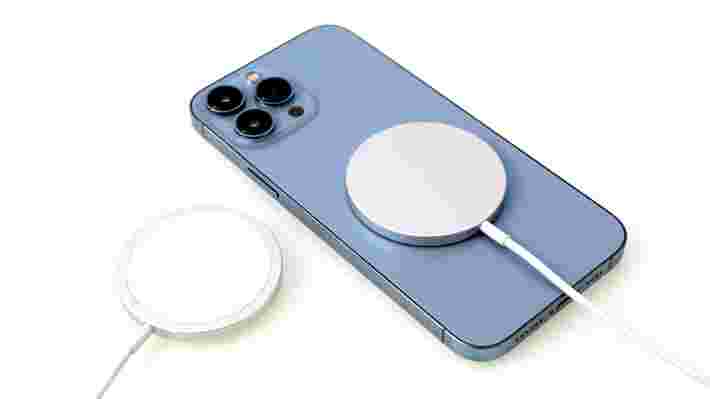While we still know little about Sonic Frontiers, the first open-world adventure for the super-fast hedgehog, there is a good reason to hope it will be something special: one of the main writers on the title is Ian Flynn, a big name in the Sonic community, and chief writer on Archie Comic’s Sonic the Hedgehog series and lead writer on IDW Publishing’s Sonic the Hedgehog comics.
Flynn’s path to Sonic Frontiers gives hope Sonic fans (or any fans, really) can, with perseverance, luck, and talent, one day help create the thing they love.
Flynn’s love of Sonic started when his dad brought home a Sega Genesis and Sonic the Hedgehog 2. A passion for the cartoons and comics quickly followed. “They got me hooked young,” Flynn tells us.
Throughout college and working on his English degree, Flynn remained a fan of the blue hedgehog. But on the other side, he panicked: “‘What does one actually do with an English degree?’ I asked myself.” So he decided to try and mix his passions and write a Sonic comic.
Submitting unsolicited manuscripts to comic companies isn’t the norm for landing a job in the industry – not that there is a standard route – and it didn’t immediately pay off. Speaking to (now defunct) website Dreamflint back in 2006, Flynn explained how he sent in scripts for four years before then-editor of the Archie Comic’s Sonic The Hedgehog series, Mike Pellerito, gave Flynn a shot. Flynn told us how he started by writing data files – pages that appeared in the comics and gave detailed breakdowns of characters and locations – though he then moved on to penning test scripts.
Flynn rose fast; within a few months he had become the lead writer of the Sonic the Hedgehog series, a position he held for over a decade.

Going to the source
“There was always the hope,” Flynn says, talking about working on a Sonic game. “After all, I beat the odds and landed my dream job with the comic, so why not hope lightning would strike more than once?”
Still, Flynn wasn’t short of Sonic work – in addition to writing the main book, he also took on writing duties for comics based on the Sonic X and Sonic Boom television series. “Both books took a more comedic approach than the main series,” Flynn explains. “Sonic X was more out of a need to stand out, but also as a way of finding the fun in a series that was under much tighter restrictions. Sonic Boom followed in the footsteps of the cartoon rather than the games and was extra silly.”
Sonic Boom, in particular, opened up a surprising new avenue for Flynn. Showrunner Bill Freiberger had communicated with then-editor Paul Kaminski to have some of the cartoon’s writers contribute to the comic, and vice versa. “[Freiberger] coached me on how to write for TV versus comics and workshopped some pitches with me,” Flynn says. “In comics, there’s a very narrow pipeline from me to the artists. The editors and licensors have input, but the comic script is the blueprint for the art team. With TV, you have directors, storyboarders, animators, voice actors, and their directors, all influencing the final product. The TV script is structurally similar but doesn’t need to be as precise in its moment-to-moment descriptions. It’s less of a blueprint and more of a strongly suggested set of directions. I’m a big fan of the current voice team, so it was a thrill to hear my script realized by them.”
Flynn was riding high at this point, regularly penning three monthly Sonic comics and a handful of Sonic Boom TV scripts.
Then one day, everything fell apart.
End of an era
Despite having preliminary plans for issue #300 and beyond, all Archie Sonic comics abruptly ceased production in 2017, with no explanation given. This was a gut punch to fans and the books’ creatives alike, Flynn included. “I was gutted and more than a little terrified,” he recalls. “It was my regular gig, a reliable source of income, and my dream job. All of that was gone in the blink of an eye. And right before Christmas. If there was a new book, I hoped I might be involved in some capacity and point out all the talented folks I had worked with, but there were no guarantees.”
It wasn’t long after Archie Sonic’s cancelation that IDW announced it had gained the publishing rights to Sonic comics. The fans immediately jumped on the bandwagon to try and get Flynn on board. Then-editor Joe Hughes reached out to Flynn and asked if he was interested. “The answer was a thankful and emphatic ‘Yes,’” Flynn says.

At this point in his writing career, Flynn’s written for multiple Sonic comics across two different publishers, game tie-in stories, and cartoons. His fans have clamored for years for Sega to let him work on one of the games, and, at last, that opportunity has come.
“The working relationship between IDW and Sega is a bit different than the Archie days,” Flynn says, “which opened up different avenues of communication. I can’t say for certain who took notice of me when, but the offer was made [to work on Sonic Frontiers], and I gave another emphatic ‘Yes.’”
The chance to work on a significant Sonic title is “Surreal,” Flynn says. “Daunting, even. There are a lot of expectations and assumptions, and all I can do is my best and hope folks enjoy the experience. The team has been a pleasure to work with, and I hope to do it again one day.”
PlayStation Plus and Nintendo Switch Online get major pro-consumer update
Sony and Nintendo will be changing how they handle auto-renewing PlayStation Plus and Nintendo Switch Online subscriptions in the UK, after similar pro-consumer changes were made by Microsoft earlier this year.
Following an investigation by the UK’s Competition & Markets Authority (CMA), Sony and Nintendo will be rolling out alterations to the services that will make it harder for inactive subscribers to accidentally pay for the services they no longer want.
Sony has agreed to stop taking payments from PlayStation Plus members who haven't used the service in a long time, and remind inactive subscribers how to stop paying for the service.
Nintendo, meanwhile, has already changed its renewal policy. Nintendo Switch Online subscriptions are no longer sold with auto-renewal set as the default options, preventing players from automatically taking out monthly renewing contracts.
Previously, PlayStation Plus and Nintendo Switch Online would indefinitely charge players until they actively ended their membership. That meant you could end up accidentally paying for the services for potentially months at a time because you’d forgotten to cancel them.
The CMA said these changes will go some way to prevent that, protecting consumers who often find it unclear whether their subscriptions automatically roll over each month, as well as difficult to turn off the auto-renewal process.
“As a result of our investigations, a number of changes have been made across this sector to protect customers and help tackle concerns about auto-renewing subscriptions,” said the CMA’s executive director of enforcement, Michael Grenfell.
“Today's announcement therefore concludes our investigations into the online video gaming sector. Companies in other sectors which offer subscriptions that auto-renew should review their practices to ensure they comply with consumer protection law.”

Following Microsoft's lead
The updates follow similar changes made by Microsoft to its Xbox Live Gold and Xbox Game Pass memberships earlier in the year. Like Sony, Microsoft will now remind inactive customers how to stop their subscription payments, and eventually stop taking payments from them if they continue to not use their membership.
The CMA later clarified to The Verge that these changes “to inactive subscriptions will initially roll out in the UK and will be available globally soon", possibly suggesting Sony and Nintendo will also rollout their changes worldwide, too.
Microsoft has also committed to adapting its refunds policy . The company will now contact customers who’ve taken out recurring 12-month packages and give them the option to end their contract, as well as grant a pro-rata refund for any unused months they paid without realizing.
There’s still room for improvement, mind. PlayStation Plus and Xbox Game Pass users still aren't presented the option to turn off auto-renewal when they first take out a subscription, meaning they’ll have manually switch it off, or rely on Microsoft and Sony’s reminders. And if you forget to request a refund for any inactive you accidentally used, you’ll be left out of pocket.
It’s certainly a step in the right direction, and will hopefully go some way to curb the aggressive subscription practices prevalent across tech. These changes might encourage other, large companies to follow suit, including Amazon, which has long been criticized by consumer rights groups for obscuring how to cancel your Prime membership .
6 things an iPhone Flip could do to beat the Samsung Galaxy Z Flip 3
The Samsung Galaxy Z Flip 3 currently ranks as our favorite clamshell foldable phone – partly through its own merits but partly from a lack of meaningful competition – however, if the rumored iPhone Flip comes along, Apple could snag Samsung's crown.
Apple only adopts new tech when it has something meaningful to contribute, so while Samsung has a head start in the foldable phone race, we're expecting big things from Apple's debut for the design.
When an iPhone Flip launches, it'll likely be a polished mobile with top features that make it a competitive handset – enough, perhaps, to rival other companies' offerings.
We haven't heard too much solid information about the device just yet, but if Apple is going to topple Samsung to get the 'best clamshell foldable' crown, there are a few things we'd like to see in the iPhone Flip.
1. A crease that isn't too obvious
One of our biggest gripes with the Samsung Galaxy Z Flip 3 – and all foldable phones from the brand – is the crease.
The crease is a natural part of foldable phones, as it's the area of the display which folds, and generally, there's a noticeable ridge in the screen there.
However, Samsung's foldables have creases that are far more pronounced than on rivals' equivalents, something you can easily notice while simply swiping your finger along the display – a task you're likely to be doing quite a bit on a smartphone.
This is something we've noted most when testing out other foldables, and it makes them far more enjoyable to use as a result. So if the iPhone Flip wants to provide a better user interface than Samsung's foldable, Apple needs to find a way to hide the crease better than Samsung does.

2. Three rear cameras
When smartphones have multiple rear cameras, they provide photographic versatility due to the different lenses each use – the iPhone 13 Pro has an ultra-wide, main and telephoto combo for a range of zoom options for example.
If the iPhone Flip gets the same cameras as the 13 Pro, it'd already beat the Galaxy Z Flip 3, which only has two. With its main and ultra-wide snappers, we found the Flip was fine for casual photography, but if you're dropping loads of money on a pricey flexer, you want more than 'fine.'
By including a strong array of rear cameras, Apple would ensure iPhone Flip was more versatile for photography than Samsung's.
3. A useful outer display
Every clamshell foldable phone we've seen has, in addition to the inner display, had a small outer display.
The function for this varies from phone to phone, but generally they're used for showing you notifications, music controls, the time, and your remaining battery.
Something we noted in our Galaxy Z Flip 3 review, though, was that this outer display still wasn't terribly useful. We used it from time to time, but it didn't cause us to change how we used the mobile – we still opened the handset up to check notifications or scroll through music apps looking for a new tune.
Samsung needs to add more functionality to this outer display, perhaps by making it big enough that it can legitimately be useful for complex functions, or maybe with a wider range of apps and widgets that make the most of it.

4. A long-lasting battery life
Another issue we found with the Galaxy Z Flip 3 – and the Motorola Razr, another clamshell foldable, for that matter – is that its battery life was rather unimpressive, and we had to charge it more than we'd like.
To an extent, this is understandable because the nature of a clamshell's small body means there isn't much space for a big battery. But there are other ways for a smartphone to have a long-lasting battery life.
In recent years, we've found Apple has improved its software optimization so that, even if its phones have smaller batteries, they last quite a long time between charges.
If it did the same for the iPhone Flip, we could see a mobile that easily lasted a full day of use, which would make it better in the battery department than Samsung's equivalent.
5. A wider array of folded features
A few clamshell foldable phones we've seen feature special modes or tools that only work when the device is half-closed.
A good example of this is in clamshell phones – you can have the device open at a right angle, and while one side rests on a surface, the other is pointed up – this can be used as a handy way to take photographs if you need a stable surface.
The range of flex features in foldables we've seen is quite limited though, and they largely focus on uses for the front and rear cameras while at various stages of folding.
If Apple came up with extra things we could do while the device was flexing, it would provide useful features not available to users of the Samsung phone, and it could give it the edge.

6. MagSafe compatibility
Now this is a feature that Apple could introduce to its iPhone Flip that Samsung would have no answer for.
MagSafe is Apple's magnetic feature for smartphones, so you can clip on extras like wireless chargers, cases, wallets and more, and other than Realme, no company has introduced equivalents for their own devices.
Rumors suggest Apple is looking to expand MagSafe to more products like iPads, too, so it seems like the company is building its ecosystem of magnetic products.
MagSafe for iPhone Flip could let you utilize all the features it brings to other tech, but perhaps more. We could see stands that use the feature, as the iPhone Flip will likely be rather lightweight, or cases that are held to the device by magnets instead of hugging tight to its form – a solution that doesn't always work well for phones with moving parts.
Unless Samsung were to create a MagSafe rival – something which we don't see happening any time soon – this would be a useful extra feature that could give the iPhone Flip the edge.